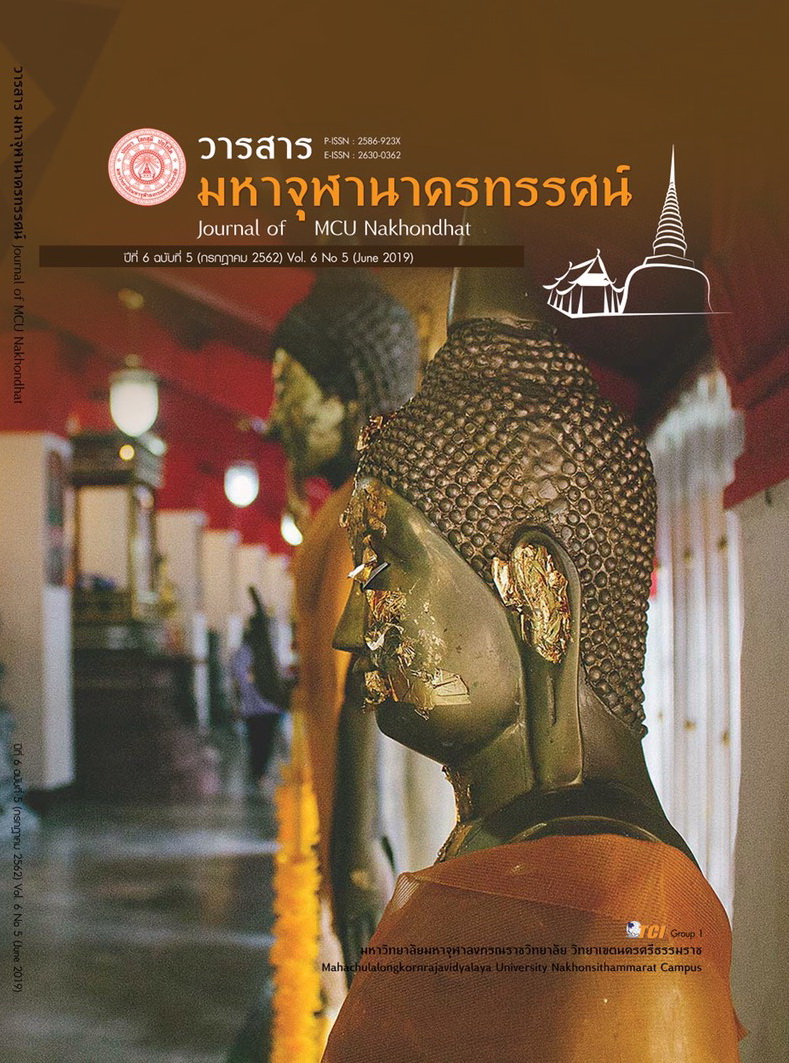GUIDELINES FOR SUSTAINABLE CITY DEVELOPMENT OF THE DIMENSIONS OF BUDDHISM : A CASE STUDY OF CHIANG MAI CITY
Main Article Content
Abstract
Research is of three objectives: 1) to study sustainable city in an international context, 2) to study sustainable city in Theravada Buddhism, 3) to seek for the guidelines for the sustainable development of Chiang May City. This is done by a qualitative research based on the documentary and the in-depth interview as the tool of this research. The documentary focus issues on International Sustainable City and sustainable city of the dimensions of Buddhism, including related urban development concepts, urban evolution, city elements and best of sustainable cities. Which to develop a question set for 10 urban developer experts’ interviews of Chiang Mai city. The source of experts, who are Snowball Sampling Technique.
The results are found that:
- The Western countries have got a concept of sustainable city development with an important concept such as: the concept of eco-city focusing on reserving the environment. The Compact city concept is focusing on reducing consumption. The concept of the modern urban community is aiming and following along with the people ‘s experience and attitude. And finally, the concept of a healthy city is targeting on being a livable city.
- The Buddhism concept in the principle of sustainable cities is as the following: the concept of sufficient self-reliance, the moderation relating to self-reliance that has a balanced hierarchy of "communities" in the "city" in the physical, economic and social dimensions. This principle of sustainable cities is placed according to the 7 Sappaya Principles in the development of cities to achieve sustainability having corresponded to a sustainable city in a universal context.
- The guidelines for the sustainable development of Chiang May city in Theravada Buddhism under the Tourist City Development Context is found that : The city development should be focused on many aspects: the preservation of the physical environment, its culture which is the root of the city. The development of non-motorized transportation systems. The open to the participation and the role of people in urban development. Good governance management and the development of knowledge and its own technology.
Article Details
References
มหาจุฬาลงกรณราชวิทยาลัย. (2539). พระไตรปิฎกฉบับภาษาไทย ฉบับมหาจุฬาลงกรณราชวิทยาลัย. กรุงเทพมหานคร: โรงพิมพ์มหาจุฬาลงกรณราชวิทยาลัย.
ไมเคิล คีทิง . (2537). แผนปฏิบัติการ 21 เพื่อการพัฒนาที่ยั่งยืน แปลโดย มานพ เมฆประยูรทอง. กรุงเทพมหานคร: อมรินทร์พริ้นติ้ง แอนด์ พับลิซซิ่ง จำกัด.
วิจิตรบุษบา มารมย์. (2560). หนังสือการประเมินองค์ความรู้ด้านเมืองยั่งยืนในประเทศไทย. คณะสถาปัตยกรรมศาสตร์และการผังเมือง มหาวิทยาลัยธรรมศาสตร์.
สิงหนาท แสงสีหนาท. (2545). หลักการทางแนวคิดชุมชนเมืองที่ยั่งยืนในบริบทของไทย. ใน วิทยานิพนธ์สถาปัตยกรรมศาสตรมหาบัณฑิต สาขาวิชาการออกแบบชุมชนเมือง. มหาวิทยาลัยศิลปากร.
UN-Habitat III. (2016). HABITAT III POLICY PAPER 4 – URBAN GOVERNANCE,CAPACITY AND INSTITUTIONAL DEVELOPMENT. เรียกใช้เมื่อ 7 มีนาคม 2019 จาก http://habitat3.org/wp-content/uploads/PU4-HABITAT-III-POLICY-PAPER.pdf


